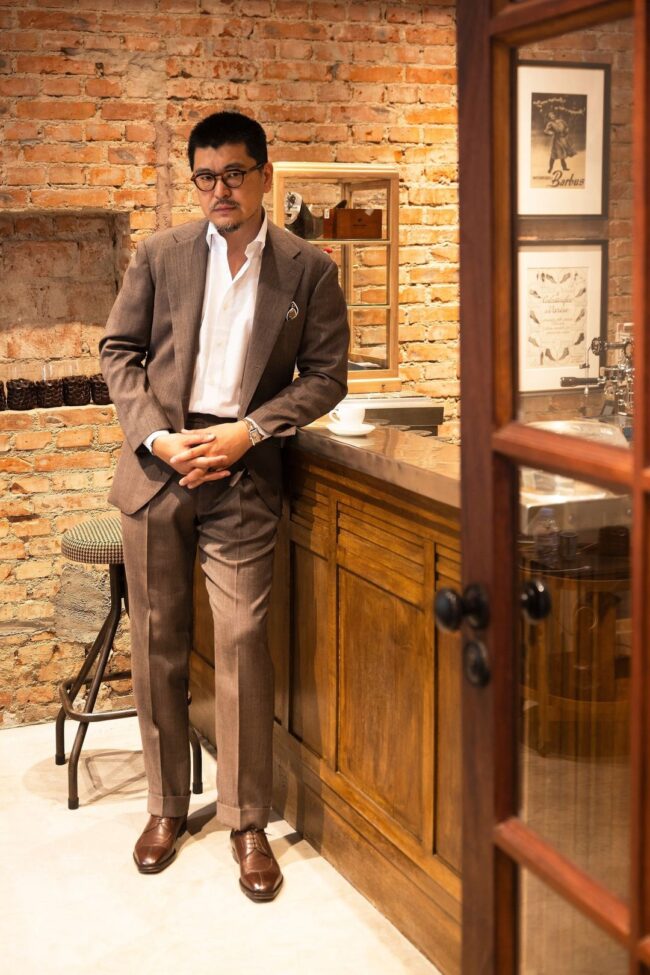
Over the summer, I emailed Fred Nieddu, the skilled cutter behind the independent bespoke tailoring house taillour, to see if he would be willing to extend his US trunk show schedule to include California. After a bit of emailing back and forth, I'm delighted to report that he agreed. Next month, he and his business partner will be visiting San Francisco and New York City to meet with clients and take orders (subsequent trips will happen once every three or four months, as usual for traveling tailors).
I became interested in Fred's work at the end of 2020, when I wrote a piece for the Vulture about how the Netflix series The Crown used Barbour jackets to represent each character's relationship with power. Although the article was about waxed cotton field coats, it was the tailoring in the show that truly captivated me. Josh O'Connor's Prince Charles wears the three-button, narrow-lapel suits that the real-life Prince favored as a youth before switching to drapey double-breasted numbers later in life. I remember thinking that the silhouettes were more faithful to the Golden Age of tailoring than the bespoke sport coat I commissioned from Anderson & Sheppard in 2016.
I later learned that Fred made all of the menswear in the series. He's also made bespoke clothes for Ralph Fiennes in Bond and all of the lead actors in Murder on the Orient Express (along with countless other films and TV shows). This, combined with the fact that he teaches pattern drafting to third-year tailoring students at the London College of Fashion, makes him a rather unique tailor. Most tailors are known for a specific house style they've perfected over time, such as Anderson & Sheppard's soft drape cut, Huntsman's padded look, or Edward Sexton's strong, angular lines. While Fred has a signature style, he's much more adaptable, as evidenced by how his clothes fit like puzzle pieces into the worlds depicted in these shows.
Keep reading
















